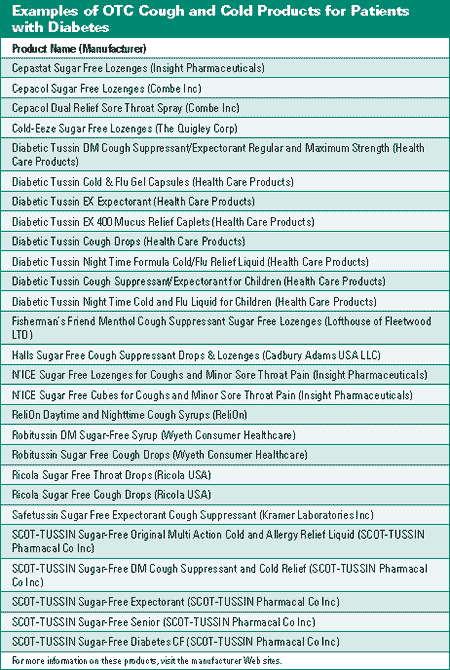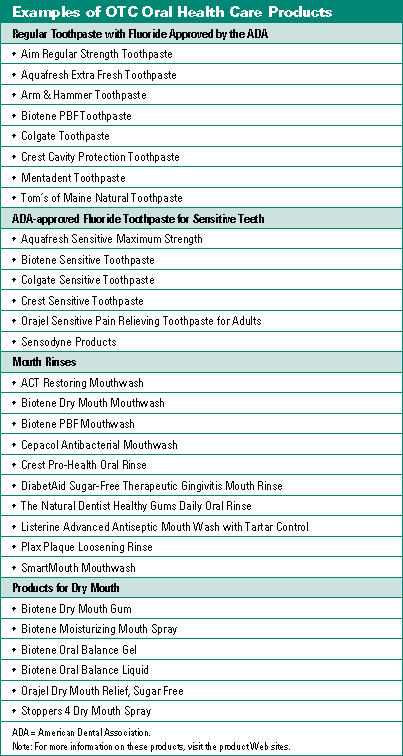Publication
Article
Pharmacy Times
Cough and Cold Products for Patients with Diabetes
Author(s):
OTC cough and cold products for the diabetes patient population.
Ms. Terrie is a clinical pharmacy writer based in Haymarket, Virginia.
Currently, a variety of OTC cough and cold products are available on the market to meet the specific needs of the diabetes patient population. Pharmacists can assist patients with diabetes by making them aware of the availability of these specialized cough and cold products, as well as guide them in the proper selection of OTC products.

These specialized products are available in various formulations that include liquids, tablets, and lozenges for both the adult and pediatric patient populations. Many of the cough and cold products marketed for the diabetic population are formulated as free of sugar, alcohol, dextrose, sucrose, sorbitol, sodium, fructose, glycerin, and dyes.

Prior to recommending the use of any OTC products to patients with diabetes, pharmacists should evaluate the patient?s current allergy/medical history and drug profile to prevent potential drug interactions and/or contraindications, as well as ascertain if self-treatment is appropriate. Furthermore, pharmacists should always counsel patients on the proper use of these products and remind patients to always adhere to the manufacturer?s directions and warnings listed on the product?s label and to avoid the use of medications that contain sugar or alcohol when possible.

During patient counseling, pharmacists should advise patients to consult a pharmacist or their primary health care provider before using any OTC products, including alternative/complementary medications or supplements, to determine if they are appropriate to use. Patients also should be reminded to always read the labels to check the sugar and alcohol content of medications. It is important for pharmacists to remind patients that the use of certain medications may affect their blood glucose levels. For example, the use of a decongestant, such as pseudoephedrine, should be used with caution in patients with diabetes, because it may elevate blood glucose levels. Pharmacists also may suggest various nonpharmacologic measures that may ease the discomfort of the symptoms associated with a cough or cold, such as the use of vaporizers or humidifiers, rest, adequate hydration, and to alleviate congestion, the use of nasal irrigation solutions, such as Ocean Nasal Spray (Fleming Pharmaceuticals), or the use of nasal strips, such as Breathe Right Nasal Strips (GlaxoSmithKline).
For helpful patient tips to assist patients with diabetes when they are ill, visit the following Web sites:
- When You?re Sick, American Diabetes Association Web site: www.diabetes.org/type-2-diabetes/sick.jsp
- Guidelines for Sick Days, Joslin Diabetes Center Web site: www.joslin.org/Beginners_guide_653.asp
Because illness or not eating properly during an illness can affect blood glucose levels, pharmacists also should encourage patients to monitor blood glucose levels more frequently when feeling ill. In addition, patients should be advised to discuss any concerns with their primary health care provider and to seek medical care if symptoms worsen or show no signs of improvement.







